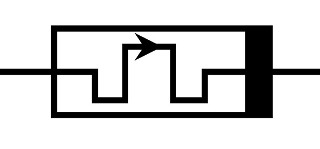Oct 22 2015
Researchers funded by the Swiss National Science Foundation have created a new electronic component that could replace flash storage. This memristor could also be used one day in new types of computers.

Two IT giants, Intel and HP, have entered a race to produce a commercial version of memristors, a new electronics component that could one day replace flash memory (DRAM) used in USB memory sticks, SD cards and SSD hard drives. “Basically, memristors require less energy since they work at lower voltages,” explains Jennifer Rupp, professor in the Department of Materials at ETH Zurich and holder of a SNSF professorship grant. “They can be made much smaller than today’s memory modules, and therefore offer much greater density. This means they can store more megabytes of information per square millimetre.” But currently memristors are only at the prototype stage.
Less rigid computing
Along with her chemist colleague Markus Kubicek, Jennifer Rupp has built a memristor based on a slice of perovskite just 5 nanometres thick.(*) And the interesting thing is that she has shown that the component has three stable resistive states. As a result, it can not only store the 0 or 1 of a standard bit, but can also be used for information encoded by three states – the 0, 1 and 2 of a “trit”. “Our component could therefore also be useful for a new type of IT that is not based on binary logic, but on a logic that provides for information located ‘between’ the 0 and 1,” continues Jennifer Rupp. “This has interesting implications for what is referred to as fuzzy logic, which seeks to incorporate a form of uncertainty into the processing of digital information. You could describe it as less rigid computing.”
Another potential application is neuromorphic computing, which aims to use electronic components to reproduce the way in which neurons in the brain process information. “The properties of a memristor at a given point in time depend on what has happened before,” explains Jennifer Rupp. “This mimics the behaviour of neurons, which only transmit information once a specific activation threshold has been reached.”
Primarily, the researchers at ETH Zurich have characterised in great detail the ways in which the component works by conducting electro-chemical studies. “We were able to identify the carriers of electrical charge and understand their relationship with the three stable states,” explains the researcher. “This is extremely important knowledge for materials science which will be useful in refining the way the storage operates and in improving its efficiency.”